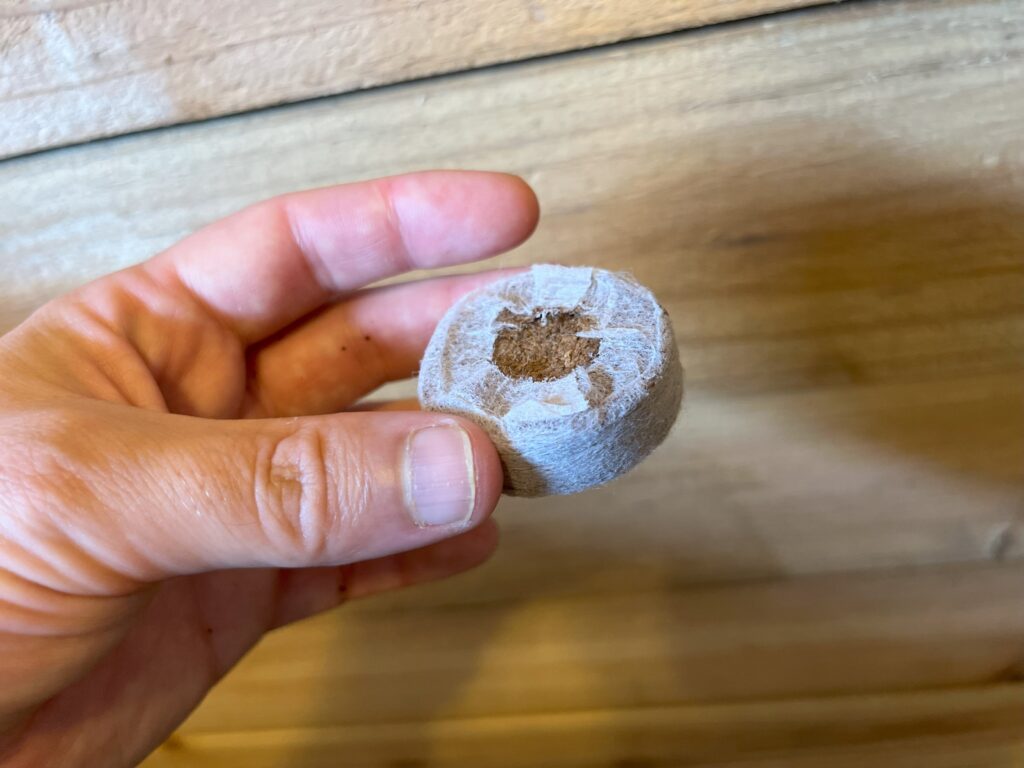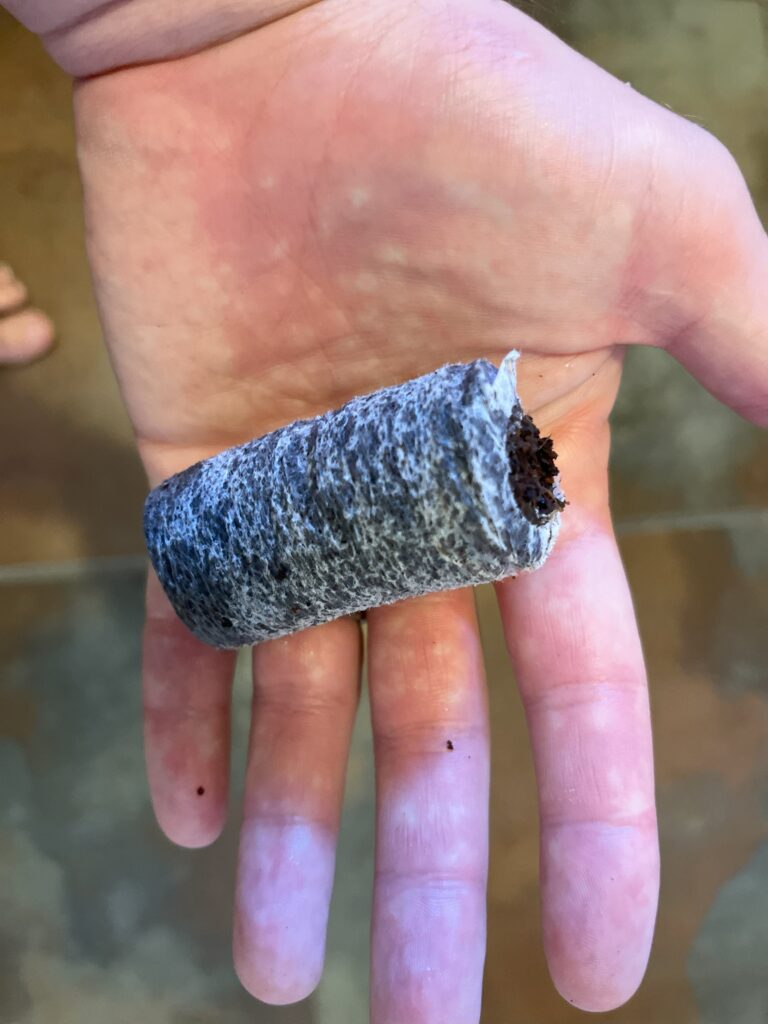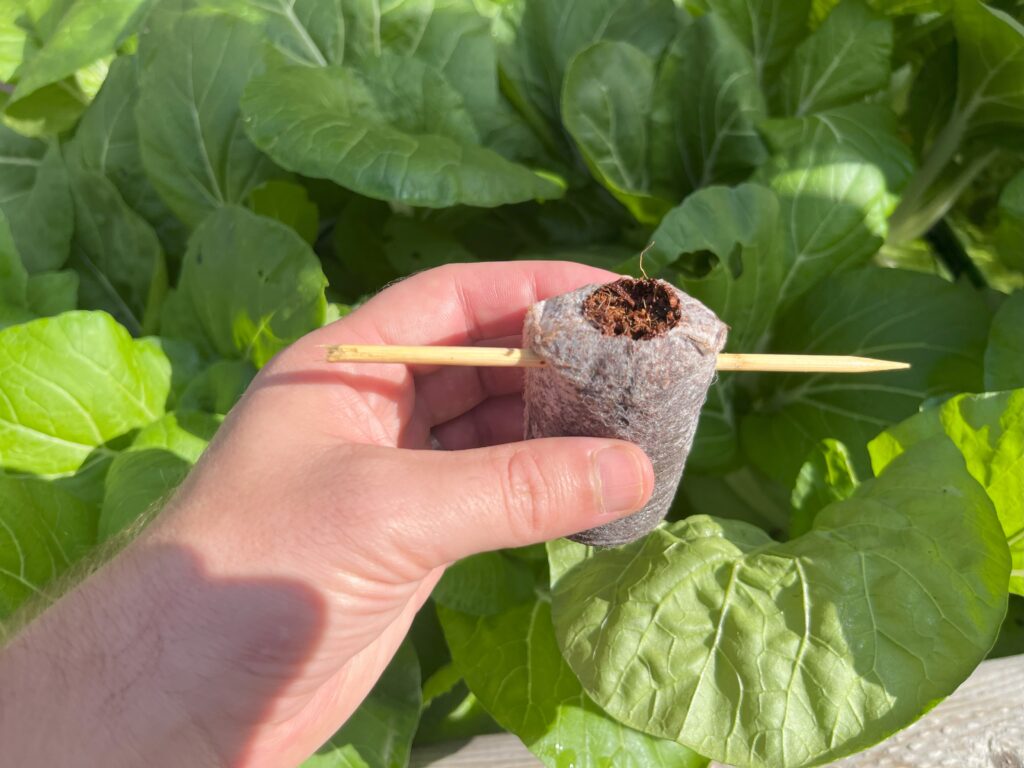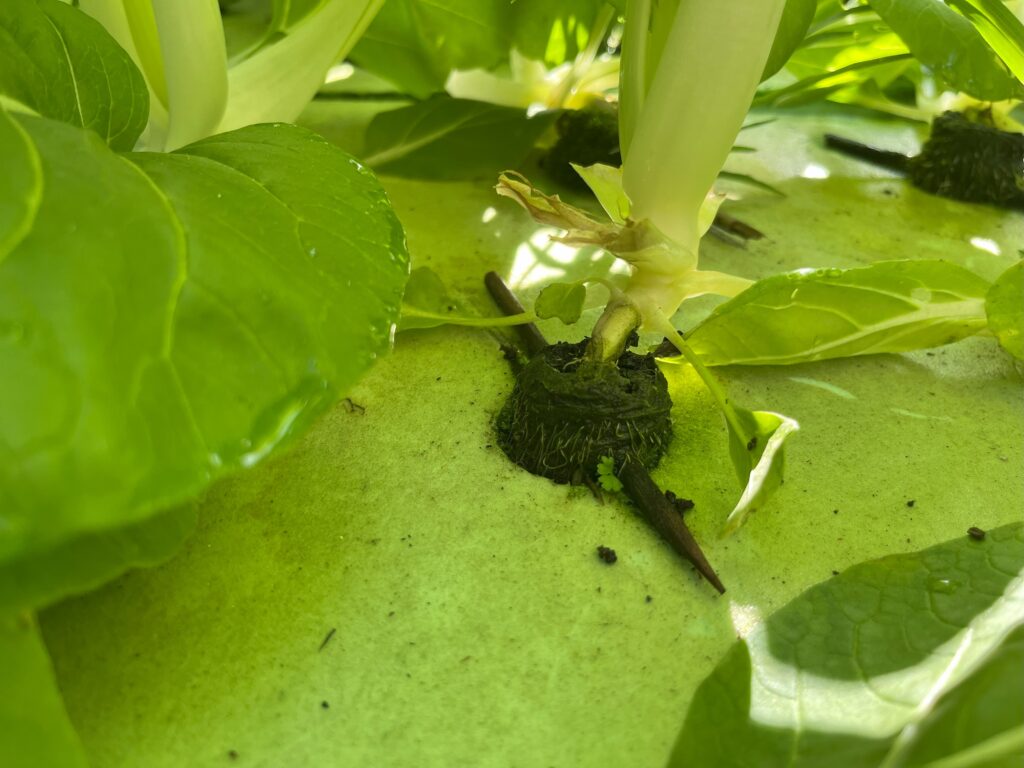If there’s one secret that every hydroponic beginner should know about, it’s the power of coco pellets. These compact, versatile gems simplify seed starting and transplanting in hydroponics, making them an essential addition to any setup.
What are Coco Pellets?
Coco Pellets, also known as Coco Discs or Coco Starter Plugs, are compacted coco coir fiber wrapped in biodegradable netting. When moistened, they expand into a perfect starting medium, creating a rich, aerated base that encourages seed germination and healthy root development.

Easy to Start Seeds
Starting seeds with coco pellets couldn’t be simpler. You can either place the pellets directly into your hydroponic system or start your seeds in the pellets separately, transferring them once a few true leaves have emerged. This flexibility is perfect for those looking to start seeds indoors before moving them outdoors or to a larger setup.
Easy to Transfer
Coco pellets make transferring seedlings a breeze. They retain their shape and provide a stable base for young plants, reducing transplant shock. Simply move the pellet into a larger setup or system as your plants grow.
Coco Pellet Sizes
Coco pellets typically come in various sizes (30mm, 50mm, etc.), from small discs suitable for herbs and greens to larger ones perfect for bigger plants. The size flexibility allows you to tailor the medium to your plant’s needs.

Coco Pellets vs. Peat Pellets
While peat pellets are similar to coco pellets and often available in standard garden centers, coco pellets have an edge. Coco coir is more sustainable and provides better aeration, which helps roots breathe and prevents waterlogging. Of course, some may still prefer peat, but for a more renewable, eco-friendly choice, coco is the clear winner.
Combining with Wood Skewers
One of the best-kept secrets in hydroponics is pairing coco pellets with wood skewers. This simple duo can transform your hydroponic system, offering an affordable, eco-friendly alternative to plastic net cups.

Saves on Plastic
Using a wood skewer means you can skip the net cup altogether. The skewer supports the pellet and seedling, stabilizing them in your system while keeping everything compact and plastic-free.
How to Build
It’s as straightforward as it gets. Simply insert a wooden skewer through the top of the coco pellet, and place it into your setup. The skewer holds the pellet in place, ensuring it stays anchored while roots grow downward into the nutrient solution below.

FAQs
Will there be algae?
Yes, a little algae is normal and tends to accumulate at the top of the pellet. It’s nothing to worry about as long as it doesn’t overgrow or spread excessively.
Will roots stick out the sides?
Yes, since the skewer is placed through the top of the pellet, a small portion of the pellet will be exposed. Some roots may protrude, but this is completely natural and doesn’t affect plant health.
Is this method superior?
In my experience, absolutely. The coco pellet and wood skewer combination provides a reliable, efficient, and environmentally friendly alternative to traditional net pots, making it an excellent choice for both beginners and seasoned hydroponic growers.
Does the wood skewer affect pH?
No, using a plain wood skewer won’t significantly affect pH levels. However, it’s best to avoid skewers with coatings or treatments, as these can sometimes leach chemicals.
How often should I replace the coco pellets?
Coco pellets are quite durable, but for optimal growth and hygiene, replace them after each growing cycle or if they start to break down. This ensures that your plants always have fresh, nutrient-retentive material.
Can I reuse the coco pellets?
Reusing coco pellets can be tricky because they may harbor old roots, salts, or residue from previous plants. If you do want to reuse them, rinse thoroughly and soak in a mild hydrogen peroxide solution before drying them out completely. Another option is to break apart the used coco pellets and add the loose coco to a larger container or bucket, allowing you to repurpose the material in other gardening setups.

What happens if the skewer starts to break down?
Wood skewers may eventually degrade, especially in constant moisture, but this takes several weeks to months. If you notice it weakening, simply replace it with a new skewer to keep the setup secure.
Do coco pellets hold enough moisture on their own?
Yes, coco coir retains moisture well, which is why it’s such a great medium. In most systems, it will keep the seeds or young plants hydrated between waterings, but in especially dry environments, you may need to add a little water to keep the pellet moist.
Where can I find more information on hydroponics?
For a deeper dive into hydroponics, including DIY tips and system designs, check out resources on the Ponics Life Hydroponics Hobby Center, which covers everything from beginner basics to advanced setups. Additionally, our online course, Hydroponics 101: Learn, Design, and Build Your Own System, provides structured guidance and hands-on project ideas.






